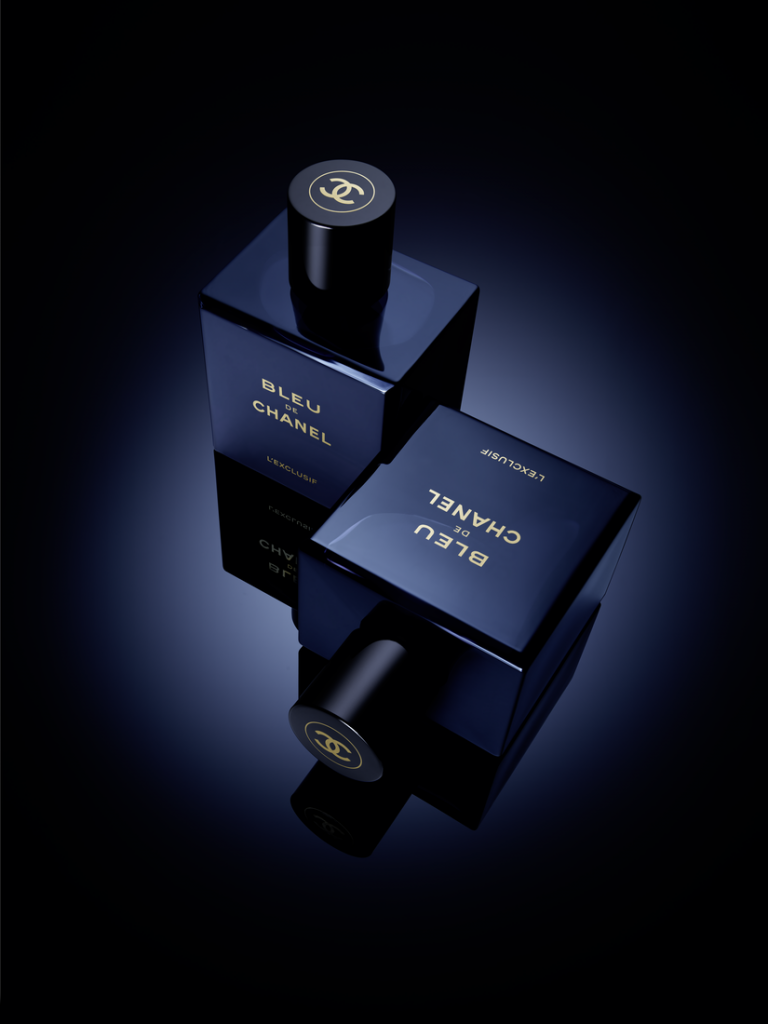Last week the Empire State Building was lit blue—or should we say bleu—to celebrate the US debut of Chanel Bleu de Chanel L’Exclusif. A fête was thrown in its honor at Le Jardin Sur Madison where actors, musicians and other bold-faced names could admire the Empire State Building bedecked in blue from the rooftop. Illuminating one of the world’s most iconic buildings is a bold move, fitting for a bold fragrance.
The latest interpretation of the original Bleu, Chanel Bleu de Chanel L’Exclusif is deeply masculine and mysterious, an intoxicating blend of sandalwood with leathery and resinous notes and an amber-woody trail. That makes its muse of women’s fragrances incredibly unlikely and intriguing.
“The starting point was to bring the Bleu signature to the level of an extrait parfum, to the concentration, the density, the depth that we usually create for women,” says Chanel In-House Perfumer Creator Olivier Polge. “In the past years, men have been more and more bold with the perfumes they are using. They expect a certain level of signature and I thought that Bleu was able to carry that type of signature. We took the same philosophy as what we do on the women’s line, that each concentration calls for an adjustment of the formula for developing new facets within the signature.”
Bringing Bleu to a new level of richness and density was the main concept. “That is very new and we were not thinking about that years before,” Polge says. “The previous generation was always thinking that men’s perfume had to be either a little discreet or maybe always carry those clean notes of men’s grooming. I feel that there is something that changed a lot today.”
Polge pushed boundaries to make the boldest Bleu yet. “The olfactive trail that follows you or stays on your clothes is the most more important part of a perfume,” he says. “It is based on the combination of woods. It’s interesting because we like to rework the raw material.”
A pillar of the juice is the raw sandalwood sourced from Maré Island, exclusive to Chanel. “We have been looking for new species of sandalwood and we found this one in New Caledonia, where there is a special quality of sandalwood that is being harvested and taken care of there by a community from Maré Island,” Polge says. “We extract the sandalwood in such a way that the wood is not too warmed up, and it is quite true to what the wood smells like, that has an oak barrel undertone. Usually, more than finding a new raw material, we find new techniques of extraction. There are different species of sandalwood that are not all the same. Then you have to find where it grows the best.”
Polge explains that the value of sandalwood is due to the fact that the oil is produced by a sandalwood tree that is at least 15 to 20 years old, so the natural resource matters a lot. “This is why we have settled this maintenance of the forest by locals who know how to find a good sandalwood,” he says. “I’ve been there and if you walk in the forest, it is very difficult to find if you don’t have someone that tells you. The tree is very common looking, which reminds me to say that all the raw materials that we use and have been picking in perfumes throughout our history are not for visual purposes. When we show the fields we have in the South of France to grow certain flowers, these are flowers that you cannot put in a vase because they would perish within 24 hours.”
Few sandalwood trees reach enough maturity to be used in perfume, so for every tree that Chanel takes for extraction, they plant 30. However, Polge estimates that only about seven of them will survive, since it’s difficult for them to thrive in the wild.
To round out of the density of wood, Polge included leathery notes. “I added an ingredient, cistus labdanum, that brings this leathery side even more apparent and slightly darker,” he says. “Sandalwood needs to be contrasted with something else, so it’s a little more subtle where other woods are a much higher pitch. There are certain things that have been shaped by the years passing by so our sandalwood doesn’t smell like regular sandalwood, our cedarwood doesn’t smell like regular cedarwood, and so on. We have always developed in the palette that I today have in my lab. It has been shaped by four generations of perfumers. We’re always trying to go beyond raw material.”
A deep inky blue bottle represents the intensity of the juice inside, in the shape of a perfect square. Chanel’s Sylvie Legastelois designed the bottle, which was inspired by an inkwell.
“What I like about it is that all the vocabulary is the same—the changes in the thickness of the bottle, and I think it helps identifying the evolution of Bleu,” Polge says. “For perfume to be successful everything has to work well together. All the elements are contributing to the impression we wanted to give.”

